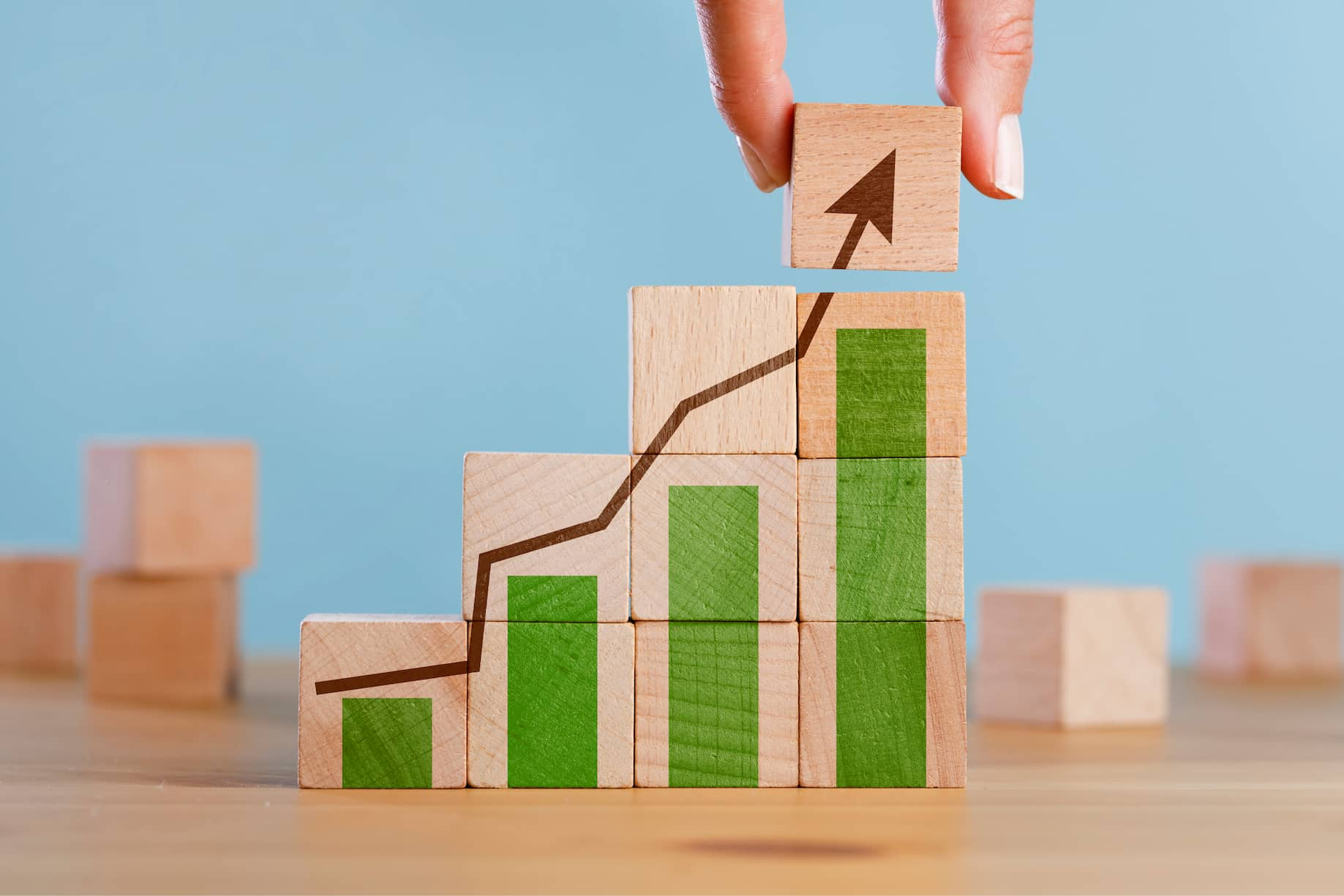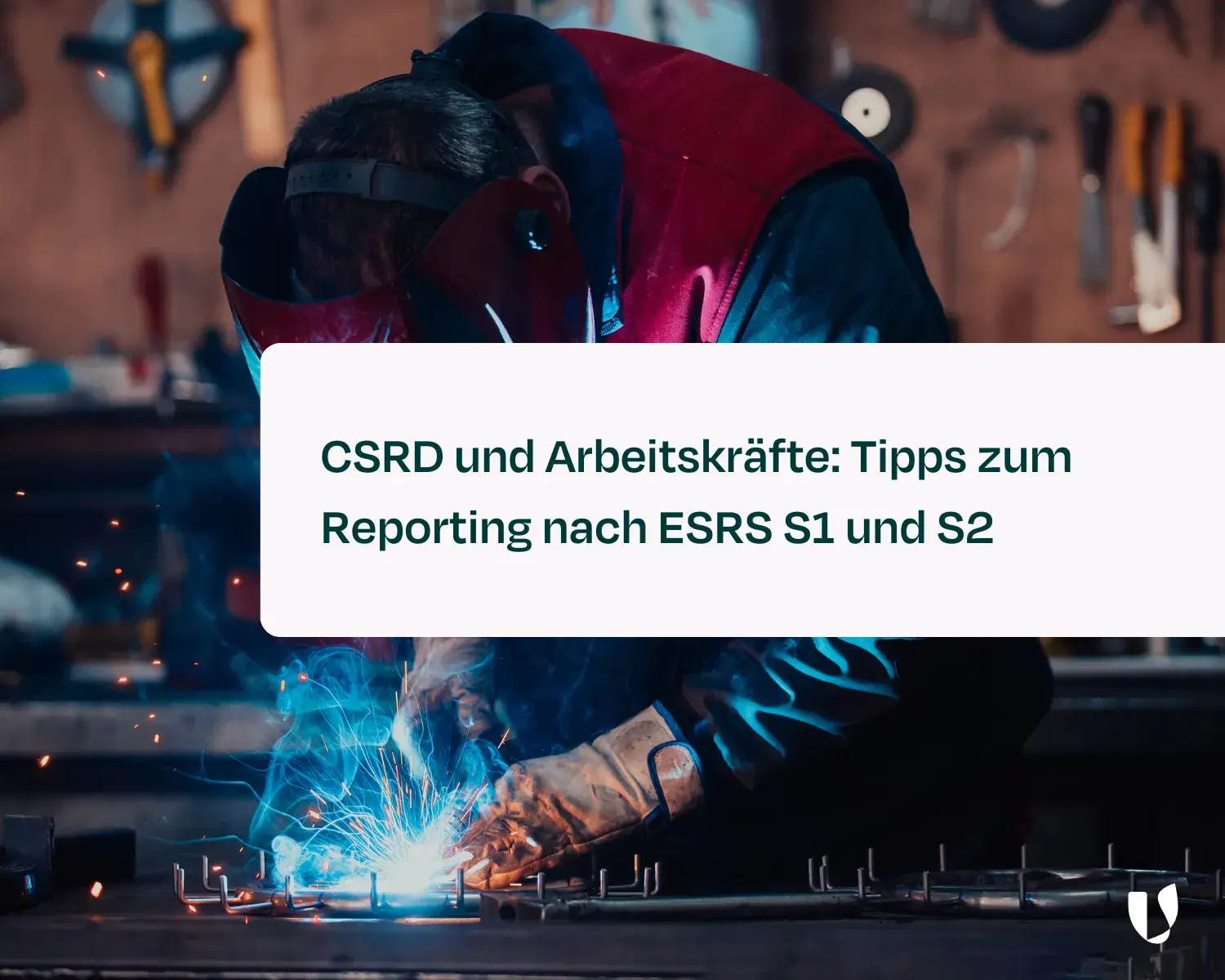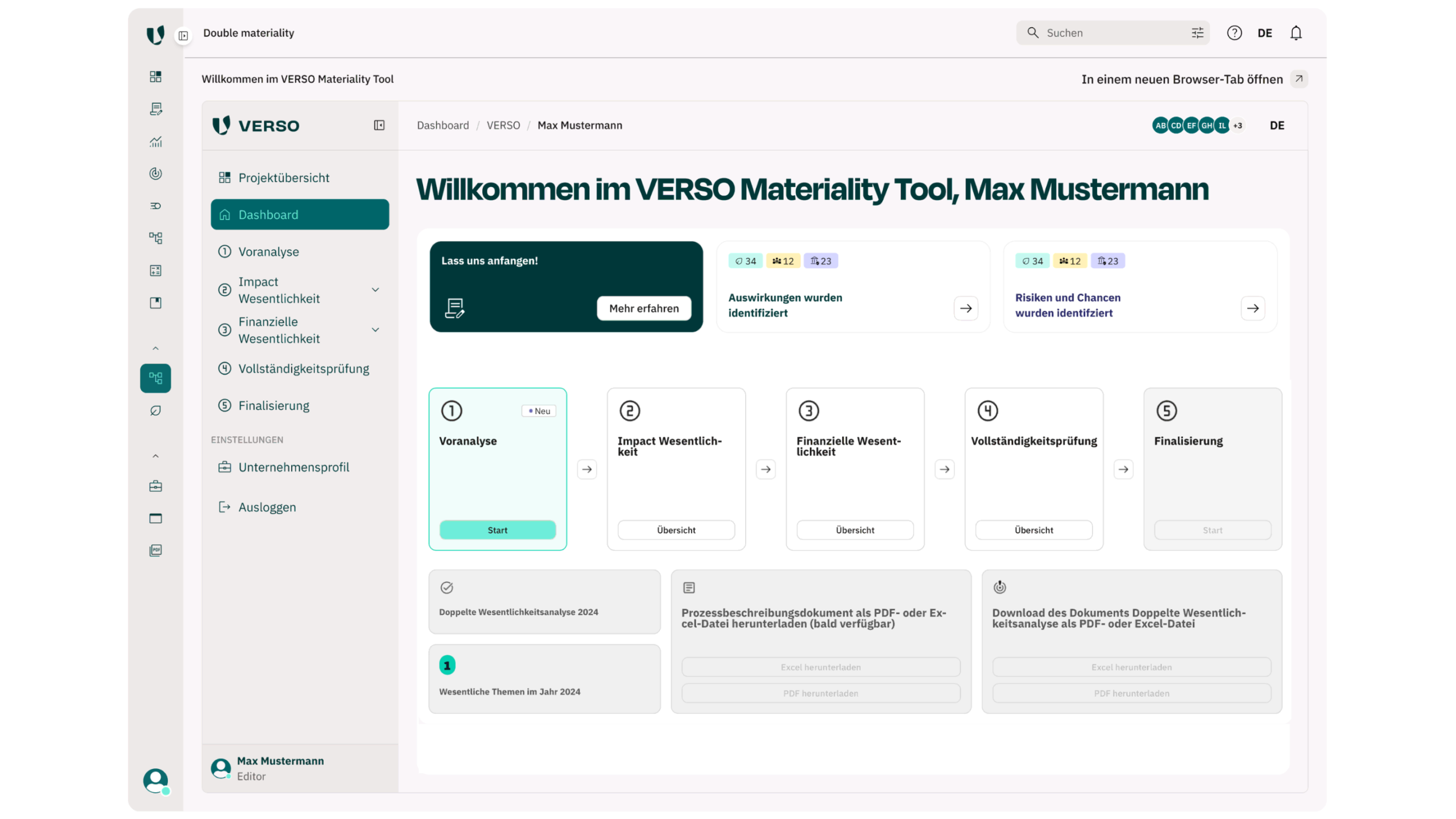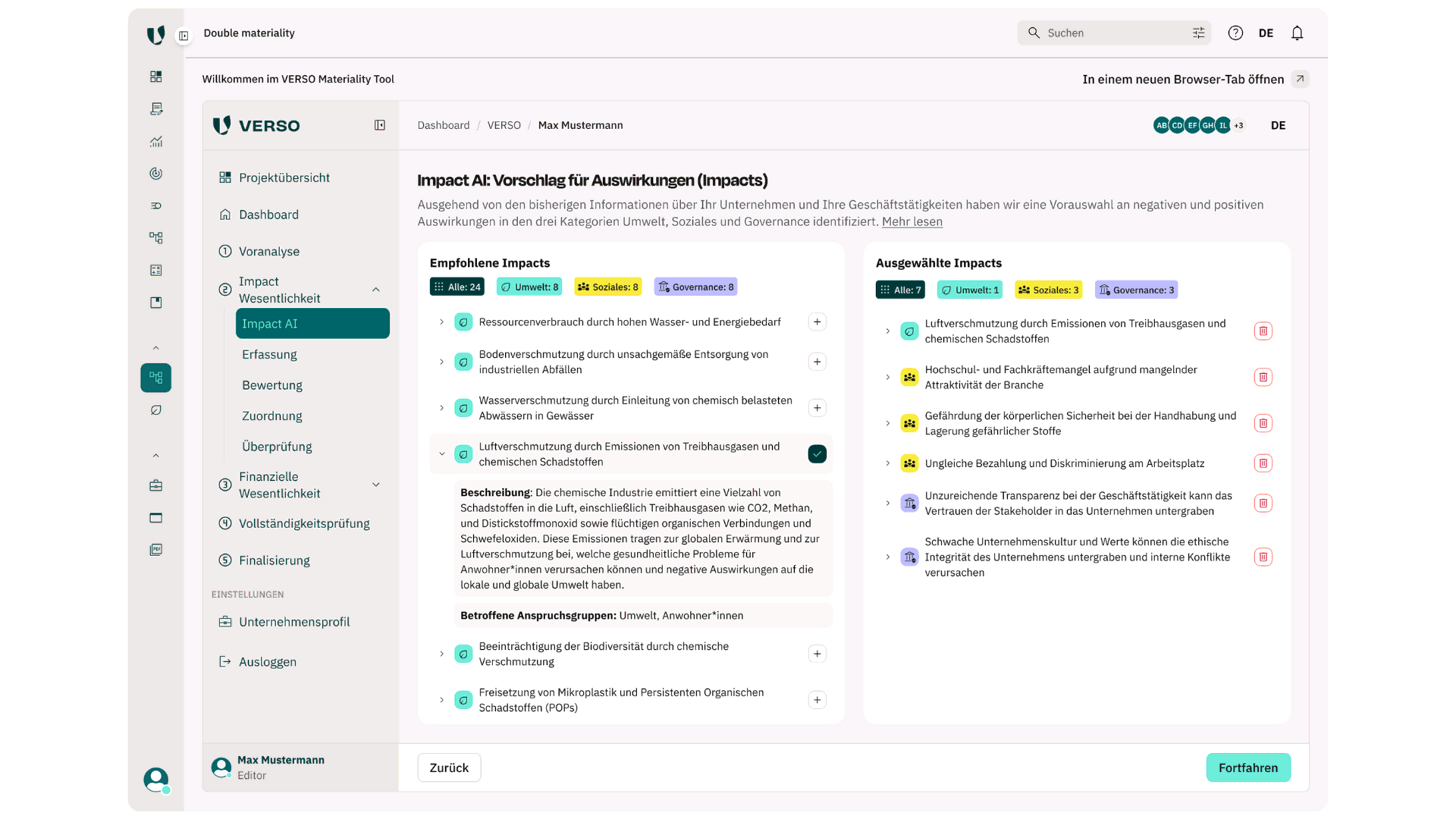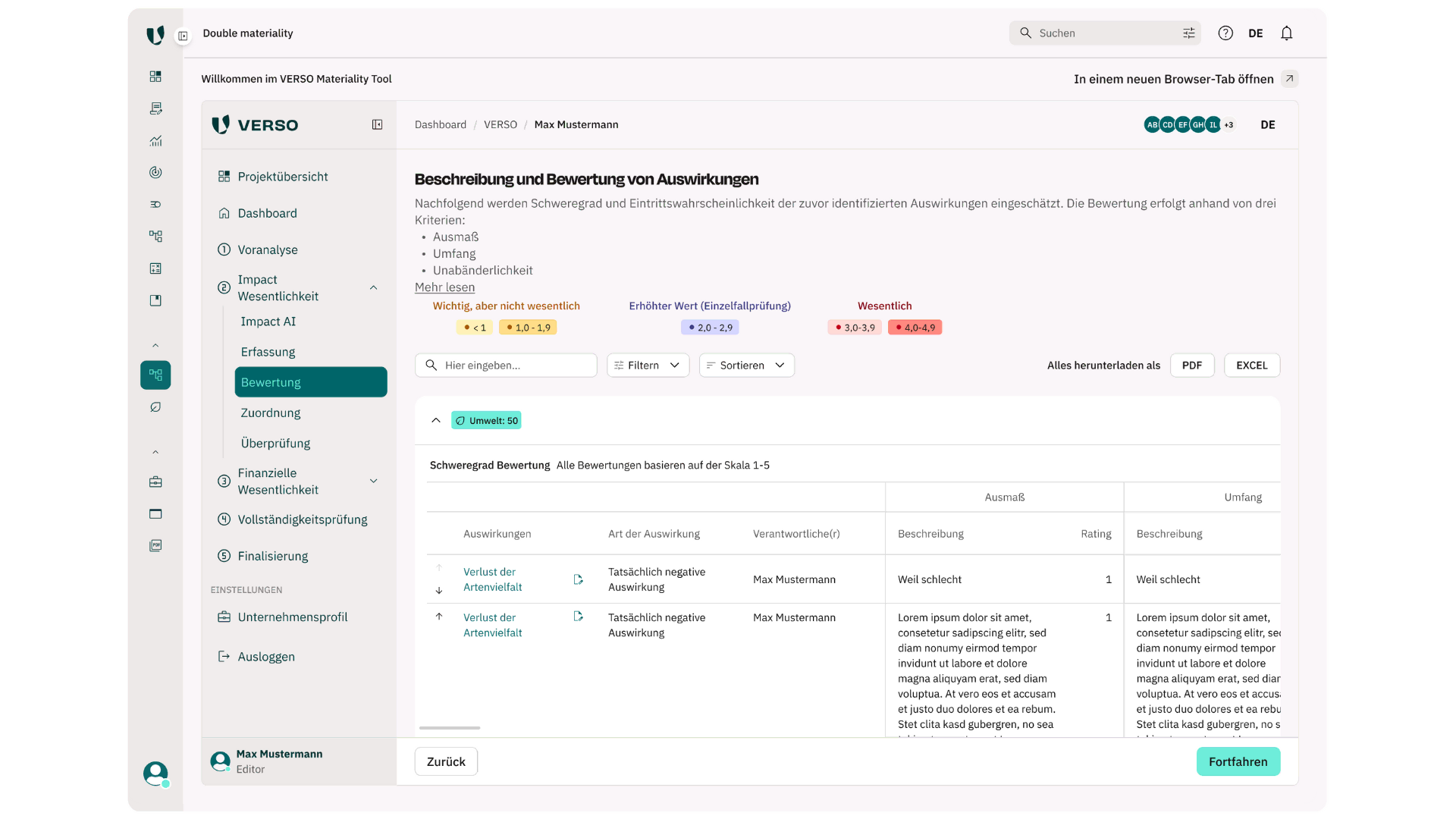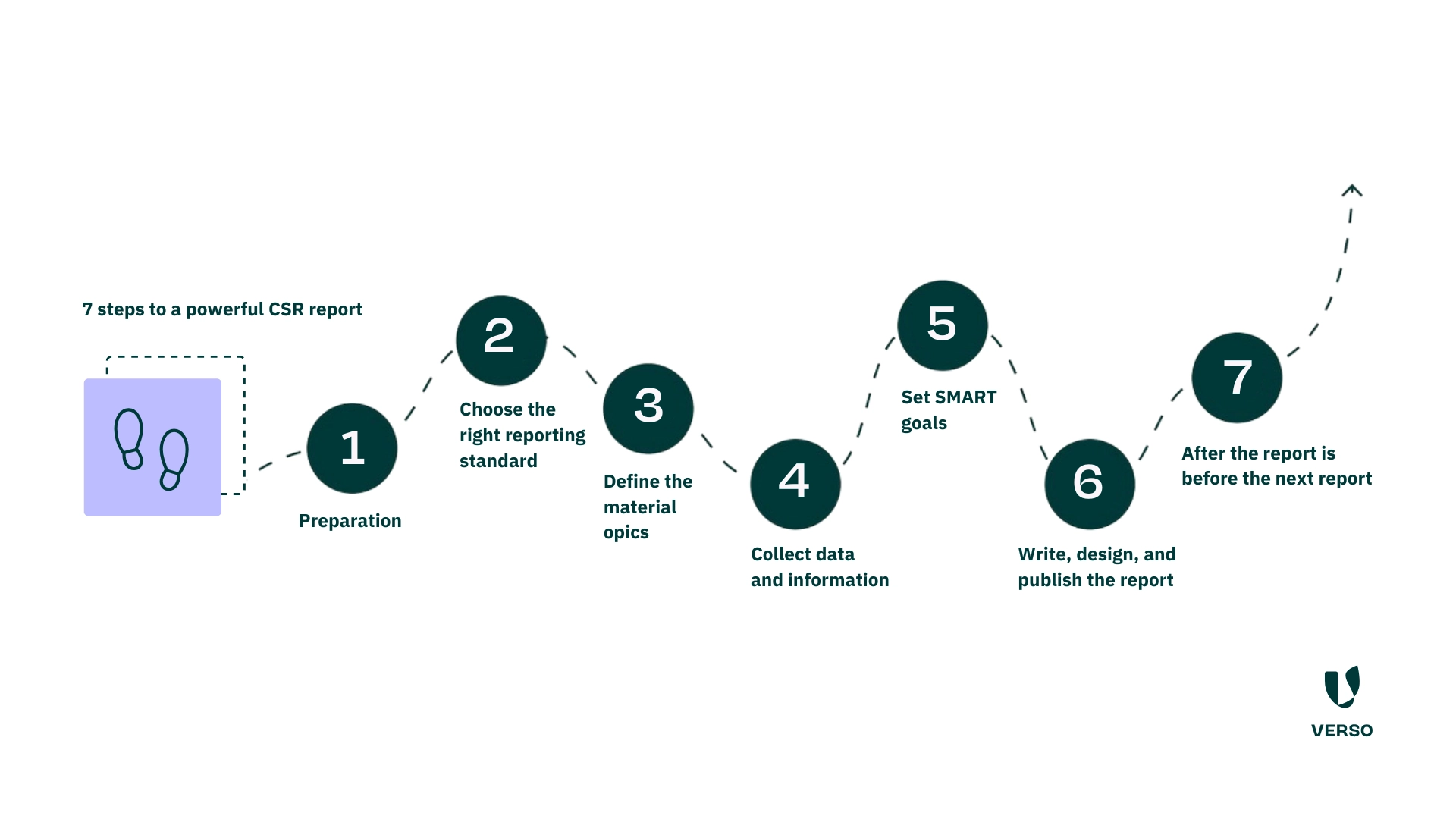
ESG Standards and Frameworks: An Overview
Get to know the key standards and frameworks for ESG management and reporting.
ESRS
About:
The European reporting standard ESRS was introduced as part of the EU CSRD Directive. Its aim is to improve the quality and comparability of sustainability reports.
Focus areas:
- Environment
- Social
- Governance
Relevant for:
Companies required to prepare a CSRD report.
Advantages:
- EU-wide comparability
- Simplified versions for SMEs
Disadvantages:
- High complexity
- Very extensive
Other:
Phased implementation depending on company size
VSME
About:
The Voluntary Standard for Small and Midsized Enterprises (VSME) enables meaningful sustainability reporting without the effort required for the “full” ESRS.
Focus areas:
- Environment
- Social
- Governance
Relevant for:
Midsized companies that want to showcase their sustainability performance without being subject to CSRD requirements – officially recommended by the EU Commission in July 2025.
Advantages:
- Clear framework for reporting and communication
- Modular structure with flexible effort levels
Disadvantages:
- No mandatory assurance
Other:
Voluntary standard.
GRI
About:
The GRI Standard has existed since 1999 and has been continuously developed since then. It provides companies with a framework to measure and disclose their progress in the ESG areas.
Focus areas:
- Environment
- Social
- Governance
Relevant for:
Primarily large international companies.
Advantages:
- Strong international recognition
- Developed in dialogue with stakeholders
- Serves as a foundation for management systems
Disadvantages:
- Very extensive
- High effort required
- Losing relevance in the EU due to ESRS
Other:
Voluntary reporting standard, but its content is reflected in the ESRS.
DNK
About:
The German Sustainability Code (DNK) is a national reporting standard. With the CSRD, it is being restructured into a support tool for companies to facilitate CSRD implementation.
Focus areas:
- Environment
- Social
- Governance
Relevant for:
According to the DNK, all companies required – or willing – to report under CSRD.
Advantages:
- Aims to simplify CSRD reporting
Disadvantages:
- No materiality assessment included
SDG
About:
The Sustainable Development Goals (SDGs) are the UN’s 17 sustainability goals. They serve as a global framework that companies can use to report on their contribution to these objectives.
Focus areas:
- Environment
- Social
- Governance
Relevant for:
Any company.
Advantages:
- Good for getting started
- Globally recognized
- Complementary framework
- Helpful for communication
Disadvantages:
- Requirements must be translated individually
- No specific corporate guidelines
Other:
Voluntary framework – SDG logos may be used for non-commercial purposes.
UNGC
About:
The UN Global Compact (UNGC) is an international network promoting 10 principles in the areas of human rights, labor standards, environment, and anti-corruption. It also offers a reporting framework.
Focus areas:
- Environment
- Social
- Governance
Relevant for:
Any company.
Advantages:
- Good for getting started
- Large network and database
- Strong support from the UN and partner organizations
Disadvantages:
- Less structured and specific
- No binding control
Other:
Voluntary framework – members may use UNGC logos for non-commercial purposes.
ISO 14001
About:
ISO 14001 is an international standard for environmental management systems. It helps companies systematically identify and continuously improve their environmental impacts.
Focus areas:
- Environment
Relevant for:
Any company.
Advantages:
- Certification available
- Internationally recognized
- Enables systematic improvement of environmental performance
Disadvantages:
- Environmental audit only recommended
- Environmental statement not required to be published
Other:
Often required in tenders.
ISO 26000
About:
ISO 26000 is an international guideline on social responsibility. It provides recommendations for integrating sustainable and responsible practices into strategies and processes.
Focus areas:
- Environment
- Social
- Governance
Relevant for:
Any company.
Advantages:
- Well suited for the development of sustainability processes
- Comprehensive approach
- Flexible application
Disadvantages:
- No certification, therefore less recognized
Other:
ISO 26000 serves as a practical guideline and can be useful in tenders.
EMAS
About:
The Eco-Management and Audit Scheme (EMAS) is a standard for environmental management systems. It goes beyond ISO 14001 by requiring, among other things, a public and detailed environmental statement.
Focus areas:
- Environment
Relevant for:
Any company – especially large enterprises and corporations.
Advantages:
- Certification available
- Public register promotes transparency
- Strengthens the environmental image
- Simplified variant for SMEs
Disadvantages:
- More demanding than ISO 14001
Other:
EMAS certification includes regular external environmental audits.
ISSB
About:
The International Sustainability Standards Board (ISSB) develops a global standard for capital market-oriented companies to ensure consistent and comparable sustainability disclosures.
Focus areas:
- Environment
- Social
- Governance
Relevant for:
Primarily capital market-oriented and international companies.
Advantages:
- Integrates and harmonizes central elements of existing frameworks
- Aims to become the leading global standard
Disadvantages:
- High implementation effort
Other:
Voluntary reporting standard, but content is reflected in ESRS.
TCFD
About:
The Task Force on Climate-related Financial Disclosures (TCFD) provides recommendations for companies on how to report the financial impacts of climate change on their business.
Focus areas:
- Climate
Relevant for:
Primarily the financial sector and capital market-oriented companies.
Advantages:
- Provides insights into climate-related risks and opportunities
- Consistent and standardized reporting
Disadvantages:
- Limited to climate-related impacts
- Implementation can be challenging
Other:
Voluntary reporting standard, but content is reflected in ESRS.
*This information is summarized editorial content and should not be considered legal advice. VERSO assumes no liability.


